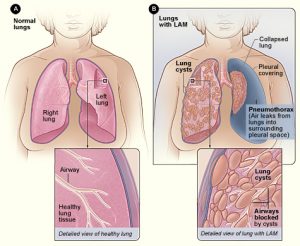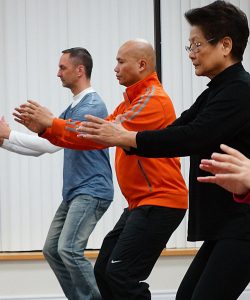Improve Sleep and Social Anxiety with Mindfulness
By John M. de Castro, Ph.D.
“Self-compassionate people tend to have lower levels of social anxiety—perhaps because self-compassion includes mindfulness, which soothes the stress associated with anxiety.” – Jill Suttie
It is a common human phenomenon that being in a social situation can be stressful and anxiety producing. Most people can deal with the anxiety and can become quite comfortable. But many do not cope well and the anxiety is overwhelming, causing the individual to withdraw. Social Anxiety Disorder (SAD) is characterized by a persistent, intense, and chronic fear of being watched and judged by others and feeling embarrassed or humiliated by their actions. This fear may be so severe that it interferes with work, school, and other activities and may negatively affect the person’s ability to form relationships.
Anxiety disorders have generally been treated with drugs. But there are considerable side effects and these drugs are often abused. There are a number of psychological therapies for anxiety. But, about 45% of the patients treated do not respond to the therapy. So, there is a need to develop alternative treatments. Recently, it has been found that mindfulness training can be effective for anxiety disorders including Social Anxiety Disorder (SAD).
Social Anxiety Disorder (SAD) has also been found to be associated with sleep disturbance. Mindfulness-based practices have been reported to improve sleep amount and quality and help with insomnia. So, it makes sense to explore the interactions of mindfulness training, sleep quality, and Social Anxiety Disorder (SAD).
In today’s Research News article “Sleep quality and treatment of social anxiety disorder.” (See summary below or view the full text of the study at: https://www.ncbi.nlm.nih.gov/pmc/articles/PMC6698895/) Horenstein and colleagues recruited healthy control participants and adult patients diagnosed with Social Anxiety Disorder (SAD). The patients were randomly assigned to either a wait-list control condition or to receive 12 weekly 2.5 hour sessions of either Cognitive Behavioral Group Therapy (CBGT) or Mindfulness-Based Stress Reduction (MBSR) along with home readings and practices. MBSR training employs meditation, body scan, yoga, discussions, and home practice. CBGT explores and attempts to change inaccurate or negative thinking so the patient can view challenging situations more clearly and respond to them in a more effective way. They were measured before and after the 12-week treatment period and 12 months later for mental illness, sleep quality, and social anxiety.
They found that at baseline the patients diagnosed with Social Anxiety Disorder (SAD) had significantly poorer sleep quality than healthy control participants. After treatment both the Cognitive Behavioral Group Therapy (CBGT) or Mindfulness-Based Stress Reduction (MBSR) groups had significant improvements in Social Anxiety Disorder (SAD) compared to baseline and the wait-list control participants. In addition, the patients who received MBSR had significant improvement in sleep quality. But this did not significantly differ from patients receiving CBGT. Sleep quality, however, did not significantly modify the treatment responses and changes in sleep quality over treatment did not predict changes in social anxiety.
These results are interesting and demonstrate that both Cognitive Behavioral Group Therapy (CBGT) or Mindfulness-Based Stress Reduction (MBSR) effectively reduce social anxiety in patients with Social Anxiety Disorder (SAD) while MBSR also improves sleep quality in these patients. This replicates previous findings that mindfulness training improves SAD and sleep. The new contribution of the present study was that sleep quality was not related to improvements in SAD.
So, improve sleep and social anxiety with mindfulness.
“Lack of sleep, or poor quality sleep, can worsen social anxiety in those with the disorder and even trigger similar feelings in others.” – Relax Melodies
CMCS – Center for Mindfulness and Contemplative Studies
This and other Contemplative Studies posts are also available on Google+ https://plus.google.com/106784388191201299496/posts and on Twitter @MindfulResearch
Study Summary
Horenstein, A., Morrison, A. S., Goldin, P., Ten Brink, M., Gross, J. J., & Heimberg, R. G. (2019). Sleep quality and treatment of social anxiety disorder. Anxiety, stress, and coping, 32(4), 387–398. https://doi.org/10.1080/10615806.2019.1617854
Abstract
Background and Objectives:
Poor sleep is prevalent among individuals with social anxiety disorder (SAD) and may affect treatment outcome. We examined whether: (1) individuals with SAD differed from healthy controls (HCs) in sleep quality, (2) baseline sleep quality moderated the effects of treatment (Cognitive-behavioral group therapy [CBGT] vs. mindfulness-based stress reduction [MBSR] vs. waitlist [WL]) on social anxiety, (3) sleep quality changed over treatment, and (4) changes in sleep quality predicted anxiety 12-months post-treatment.
Design:
Participants were 108 adults with SAD from a randomized controlled trial of CBGT vs. MBSR vs. WL and 38 HCs.
Methods:
SAD and sleep quality were assessed pre-treatment and post-treatment, and SAD was assessed again 12-months post-treatment.
Results:
Participants with SAD reported poorer sleep quality than HCs. The effect of treatment condition on post-treatment social anxiety did not differ as a function of baseline sleep quality. Sleep quality improved in MBSR, significantly more than WL, but not CBGT. Sleep quality change from pre- to post-treatment in CBGT or MBSR did not predict later social anxiety.
Conclusions:
MBSR, and not CBGT, improved sleep quality among participants. Other results were inconsistent with prior research; possible explanations, limitations, and implications for future research are discussed.
https://www.ncbi.nlm.nih.gov/pmc/articles/PMC6698895/



